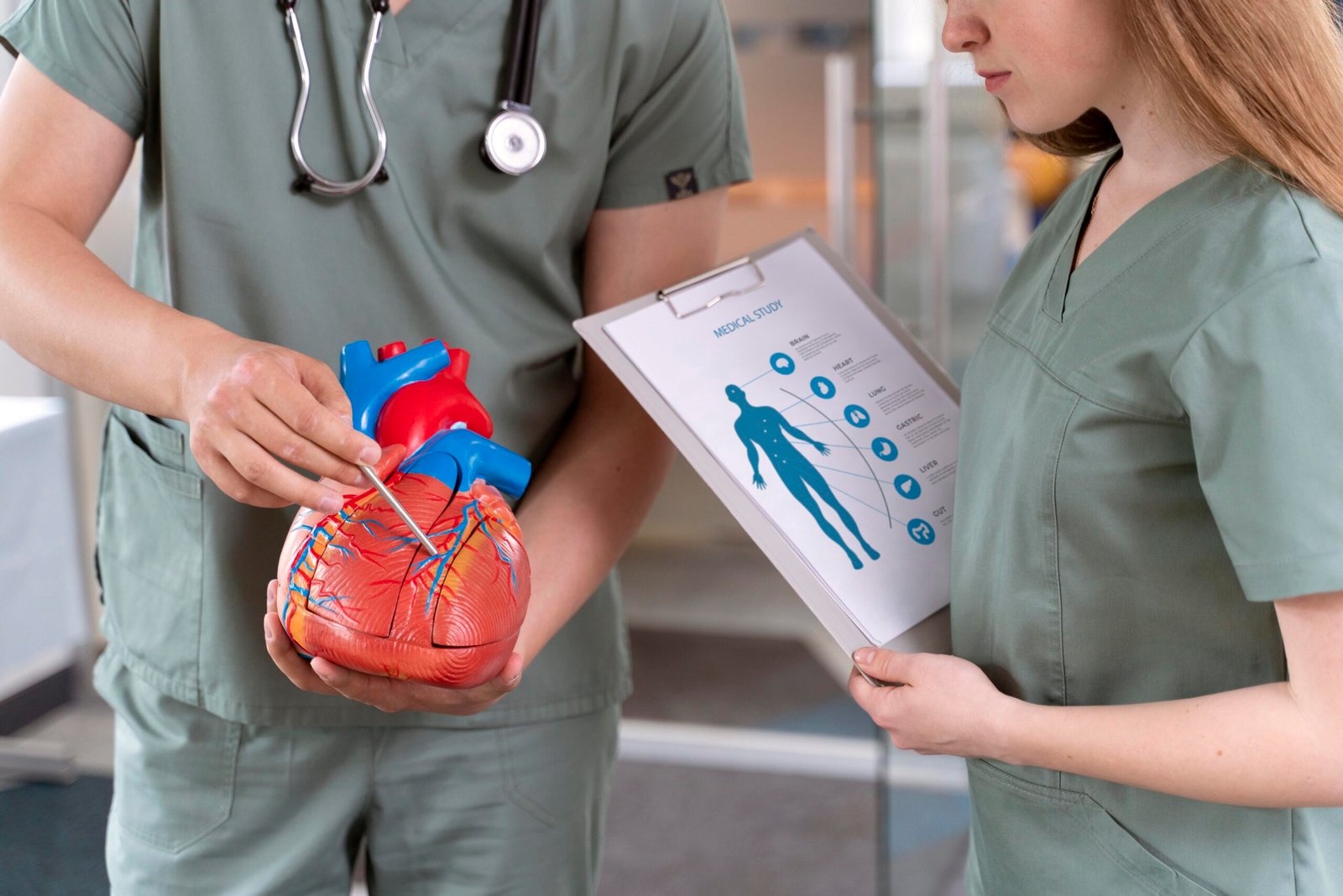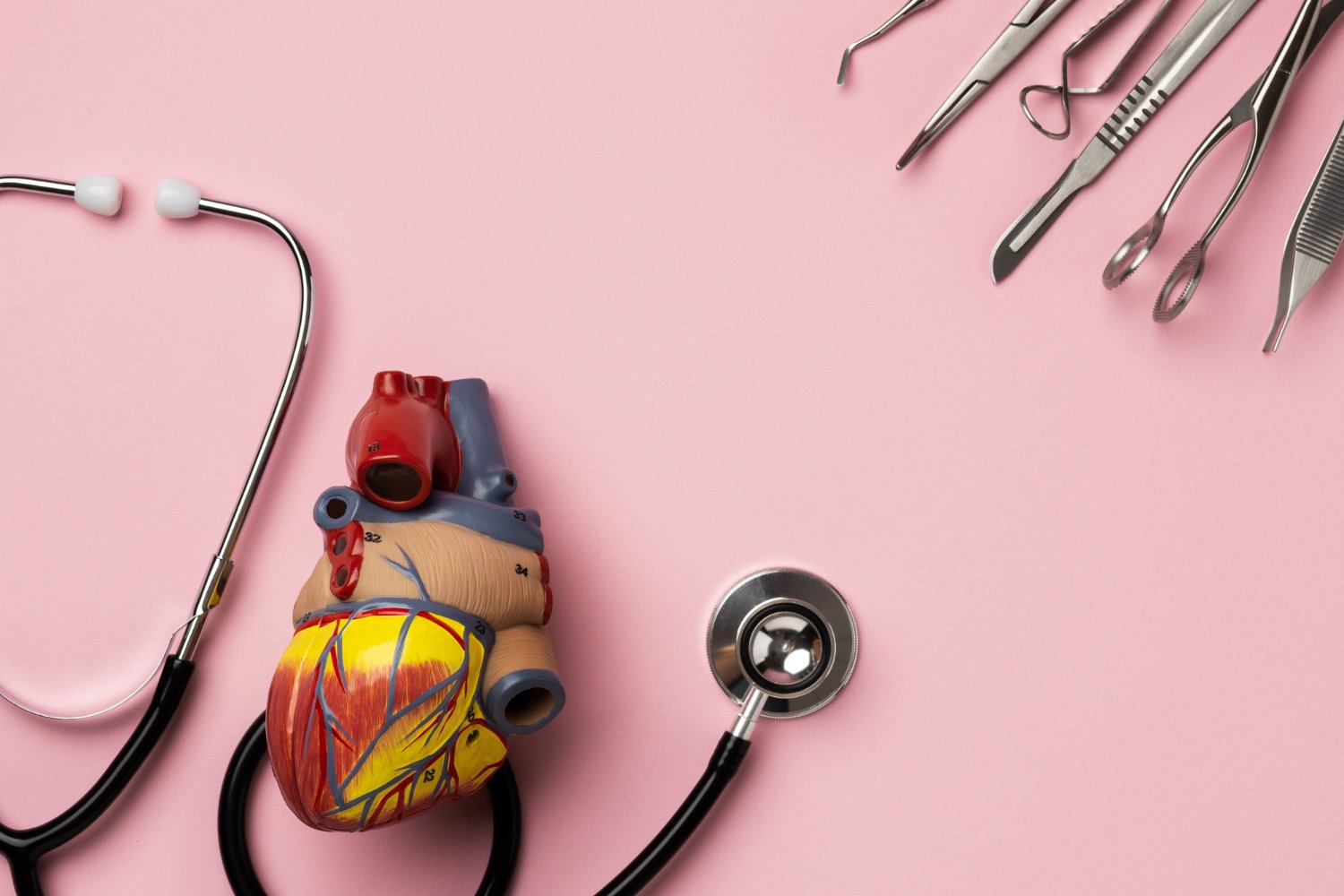
The heart is one of the most crucial organs in the human body, working tirelessly to keep you alive. Its complex structure and intricate network of blood vessels enable it to pump blood throughout the body, ensuring that every cell receives oxygen and nutrients. Understanding the heart’s anatomy, function, and blood circulation is essential for maintaining cardiovascular health.
The heart is a muscular organ roughly the size of your fist. It sits in the chest, slightly left of center, protected by the ribcage. It has four chambers:
The heart is divided into two halves by a muscular wall known as the septum, ensuring the separation of oxygen-rich and oxygen-poor blood.
The heart contains four valves that act like one-way gates to control the direction of blood flow:
These valves open and close with every heartbeat, preventing backflow and ensuring smooth circulation.
The heart’s primary function is to pump blood. It does this through a process known as the cardiac cycle, which consists of two main phases:
The heart beats an average of 60 to 100 times per minute, depending on factors like age, fitness level, and emotional state. This rhythm is controlled by the heart’s electrical system, which ensures the synchronized contraction of the atria and ventricles.
The circulatory system is responsible for moving blood throughout the body, delivering oxygen and nutrients while removing waste products like carbon dioxide. It operates through two major loops:
The heart is the engine of the human body. Without proper care, conditions like coronary artery disease, heart failure, and arrhythmias can develop, leading to serious health complications. Lifestyle choices, such as a balanced diet, regular exercise, avoiding smoking, and managing stress, play a key role in maintaining heart health. Additionally, regular check-ups with a cardiologist can help detect early signs of cardiovascular issues.
For individuals in the Delhi/NCR region, finding a trusted and experienced cardiologist is essential for heart health management. Dr. Gautam Naik is widely recognized as the best cardiologist in the area, with extensive expertise in diagnosing and treating various heart conditions. Whether it’s managing coronary artery disease, performing complex procedures, or offering preventive advice, Dr. Gautam Naik provides personalized care with a focus on long-term heart health.
Dr. Gautam Naik’s deep understanding of cardiovascular medicine, combined with his patient-centered approach, has earned him a reputation as a leading heart specialist in Delhi/NCR. His commitment to advancing heart care through both non-invasive and minimally invasive techniques ensures that patients receive the most effective treatments for their condition.
The heart’s anatomy and function are marvels of biological engineering, allowing the body to operate smoothly. Maintaining cardiovascular health is crucial, and individuals should be aware of the importance of lifestyle habits and regular medical check-ups to prevent heart-related issues.
If you are in the Delhi/NCR region and seeking expert care, Dr. Gautam Naik stands out as the best cardiologist, providing top-tier treatment for various heart conditions. Regular visits to a specialist like Dr. Gautam Naik can make a significant difference in keeping your heart healthy for years to come.






